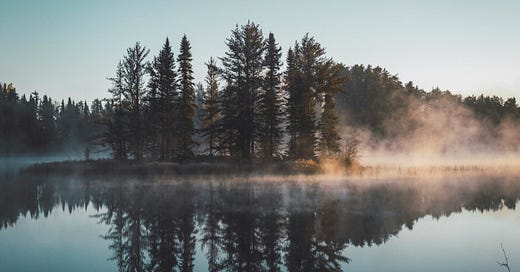Earth's Lands and Seas Lost Their Carbon Appetite in 2023
We rely on carbon sinks to absorb carbon dioxide from the atmosphere, but during 2023 these systems said "no thanks," and 2024 isn't looking any better.
Hiya!
Part of what I love about Nature is the intricate complexities that make it mysterious and unpredictable. Human-caused climate change is starting to flex its muscles, forcing scientists to learn more about Nature’s countless entwined cycles, including how plants, soil, and oceans absorb carbon dioxide from the atmosphere. Such systems are known as carbon sinks, and many assume these sinks will reduce atmospheric carbon dioxide for us.
Yet, even carbon sinks are unpredictable and unreliable. Scientists are more than concerned that the carbon sinks we depend on will break down as the Earth warms — they’re already seeing it happen. Last year, 2023, was the hottest year ever recorded, and Earth’s carbon sinks absorbed almost no carbon, which is a big, big deal.
Our Carbon Problem
Around 10-to-12,000 years ago, at the end of the last Ice Age, Earth’s climate settled into a delicate equilibrium that allowed our ancient ancestors to develop modern agriculture, which now feeds our population of over 8 billion people. Then, around 200 years ago, our human innovation and need for progress began messing with Nature’s fragile cycles — albeit unintentionally.
Unfortunately, we became too reliant on the new systems we developed, so we’ve intentionally continued disrupting Earth’s climate stability long after we learned about the dangers of what we’re doing. Now, we go about our lives while human-generated greenhouse gases fill the atmosphere, hoping and praying that the destruction won’t be as terrible as scientists predict.
One of the biggest contributors to our climate problem is carbon dioxide (CO2), which comprised 79.7 percent of the greenhouse gas emissions in 2022. Agriculture, electricity, industry, and transportation release an abundance of CO2 into the atmosphere, which insulates and heats the planet, resulting in climate instability.
Human activities have raised the atmosphere’s carbon dioxide levels by 50 percent in less than 200 years. Now, the planet is warming rapidly and causing all sorts of problems, but the discovery of natural carbon sinks helped ease people’s fears.
Natural Carbon Sinks
Carbon sinks are natural sites, like Earth’s oceans, soils, forests, and more, that absorb more carbon dioxide than they produce. Together, these carbon sinks absorb nearly half of all human-created carbon emissions, and their effectiveness leads many people to assume Nature will clean up our mess for us.
It’s more than an assumption, though. We need Nature’s help in reducing greenhouse gases from the atmosphere. Right now, reaching net zero - meaning humans remove an equal amount of CO2 from the atmosphere as we produce — is impossible without Nature.
In 2023, human carbon pollution reached a record 37.4 billion tonnes. Since we lack technology advanced enough to remove the mind-boggling magnitude of CO2 required to reach net zero, we depend on Earth’s remaining grasslands, peat bogs, forests, and tiny oceanic organisms to absorb our human carbon pollution we can’t reign in on our own.
At first, these natural carbon sinks were the perfect excuse to continue our ways and ignore scientists’ warnings, especially when carbon sinks kept up as human carbon emissions rose by increasing their CO2 absorption rate. For instance, this increase in carbon absorption made plants grow faster, making them capable of storing even more carbon.
Today, at least 118 countries worldwide rely on carbon sinks to meet their national climate goals, but warming temperatures, increased droughts, and extreme weather are pushing the planet’s ecosystems into uncharted territory — and not in a fun, adventurous sort of way.
A paper published by Nature in July 2024 by an international team of scientists found that between 1990 and 2019, the carbon absorbed by the planet's forests was overall steady, but the steadiness varied substantially by region.
For instance, the boreal forest — also known as taiga, which stretches across Canada, Alaska, Russia, and Scandinavia and stores about a third of all carbon found on land — dropped its carbon absorption rate by more than a third due to climate change.
Even more recent research shows that places like the boreal forest aren’t the exception; they were the first signs of a collapse of carbon land sinks.
Keep reading with a 7-day free trial
Subscribe to Curious Adventure to keep reading this post and get 7 days of free access to the full post archives.



